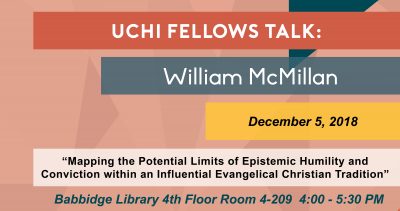Today’s Post is an interview introducing Professor Evelyn Tribble, a recent addition to the UCONN early modern community and active member of the Early Modern Studies Working Group
Evelyn Tribble (Lyn) is Professor of English at the University of Connecticut, having come from the University of Otago, Dunedin, NZ. She is the author of Margins and Marginality: The Printed Page in Early Modern England (Virginia, 1993), Writing Material: Readings from Plato to the Digital Age (with Anne Trubek, Longmans, 2003), Cognitive Ecologies and the History of Remembering (with Nicholas Keene, Palgrave Macmillan, 2011), and Cognition in the Globe: Attention and Memory in Shakespeare’s Theatre, Palgrave Macmillan, 2011). She has also published articles in Shakespeare Quarterly, Shakespeare, Shakespeare Survey, Shakespeare Studies, and Textual Practice, and ELH, among others. Her most recent book Early Modern Actors and Shakespeare’s Theatre: Thinking with the Body was published by Bloomsbury in 2017, and will be published in a paperback edition in 2019.
As a scholar, your specialization is in cognitive theory. For those who might be unfamiliar, can you explain this theory and your particular approach?
I draw upon the cognitive sciences in my work on memory, skill, and embodiment in the early modern theatre. It’s important to realize that the cognitive sciences are a highly diverse interdisciplinary endeavor: there is not one unified theory of cognition that unites them, so there isn’t really one ‘cognitive theory’ that I employ. It’s not like there is some inert, settled background of science that we can invoke to explain, say, how an actor approaches a role. Critics from outside the field sometimes still identify ‘cognitive science’ with some stereotypical assemblage of rationalist, individualist, universalist, essentialist views, but I don’t agree with this assessment. Why would we rule such rich areas of research out of court as, say, too reductive? I’ve found research in the sciences of memory, attention, and perception to be extraordinarily useful in my research into early modern acting. Just to take one example, I think that research into memory degradation over time – the process by which we forget verbal material – can help to understand which texts in Shakespeare are likely to be mnemonic reconstructions of a forgotten written text. Similarly research on how easily attention is manipulated can help us understand how Shakespeare’s players managed overlapping entrances and exits, and how audiences track, remember, and forget the unfolding action of the play.
Your latest book, Early Modern Actors and Shakespeare’s Theatre: Thinking with the Body, seems (at first glance) to center more on skill and embodiment than cognition. What drew you to study the relationship between bodily skill and cognitive processes, and can you explain more about that relationship?
This is a great question that follows directly from the previous discussion. If we posit that cognition is simply ‘thinking,’ then what do we mean by thought? Thinking does not just happen in the head, but is distributed across brain, body, and world. This model helps us to understand how early modern players coped with seemingly overwhelming cognitive loads, performing up to six different plays a week. It was often said that players could only have managed by using stock practices or routines, pandering to the groundlings, and so forth. But a model of distributed cognition can help us see that they succeeded by creating and embedding themselves within physical, social and material smart structures: the playhouse itself, governed by shared conventions of movement across the stage; cognitive artefacts such as the part and the plot; the strong social bonds fostered by the system of sharers in the playhouses; and the regimes of training and education that undergirded their practice.
In my latest book, I was particularly interested in how skills are sedimented in the body. So to study skill, we examine, amongst other matters, the training the nervous system with habituation and practice; the role of attention, memory and perception; and the extension of the body through a range of instruments and objects, including tools, treatises and social and material practices such as apprenticeship.
How were early modern actors different than the actors we know today? Why is it important for students and scholars of early modern drama to attend to these differences?
It takes enormous intelligence and commitment to be an actor, no matter what era you are living in. One of the ideas I have sought to combat is that the actors of Shakespeare’s eras were using stock routines and gestures to manage their workload. Another misconception is that the boys who played the female roles were sending it up and weren’t taken seriously. On the contrary, actors, men and boys alike, had a reputation throughout Europe as highly skilled. Yet they were working within a particular ecology – a particular set of material practices, social bonds, physical environments, and the like. Contemporary actors work in very different systems: their training is different; regular repertory work is rare; they work with a very different set of materials and artifacts; and the economics of theatre is completely different today. I think attending to these differences is very important, but it can be done without denigrating either historical or contemporary actors.
What appeals to you about the early modern period, and why should it be a presence in curriculum and research today?
There’s a lot about the early modern period that resonates with our world today. I think there was simultaneously a sense of great possibility and of great anxiety. One reason I love the early modern theatre so much – especially the earlier periods, that 1580s and 1590s – is that this was a genuinely new form. Theatre itself isn’t new, of course, but the idea of purpose-built commercial theatre, with multiple companies competing for urban audiences, really was an innovation. In many ways, the media ecology of the early modern period has many analogues to our own. Shakespeare in particular continues to resonate with students today because it is such an open form. I like to teach through performance so that students can become aware of the many choices he builds into his plays and thus can bring their own experiences into the playworld.
What aspect of your scholarly work and teaching on early modern studies are you most excited to share with the UConn community?
I’m really enjoying being a part of the English department, and it’s been great to get involved in the early modern group. I’m been working on a project on early modern magic – especially its relationship to affect and altered states – that I’m looking forward to sharing in the spring.










